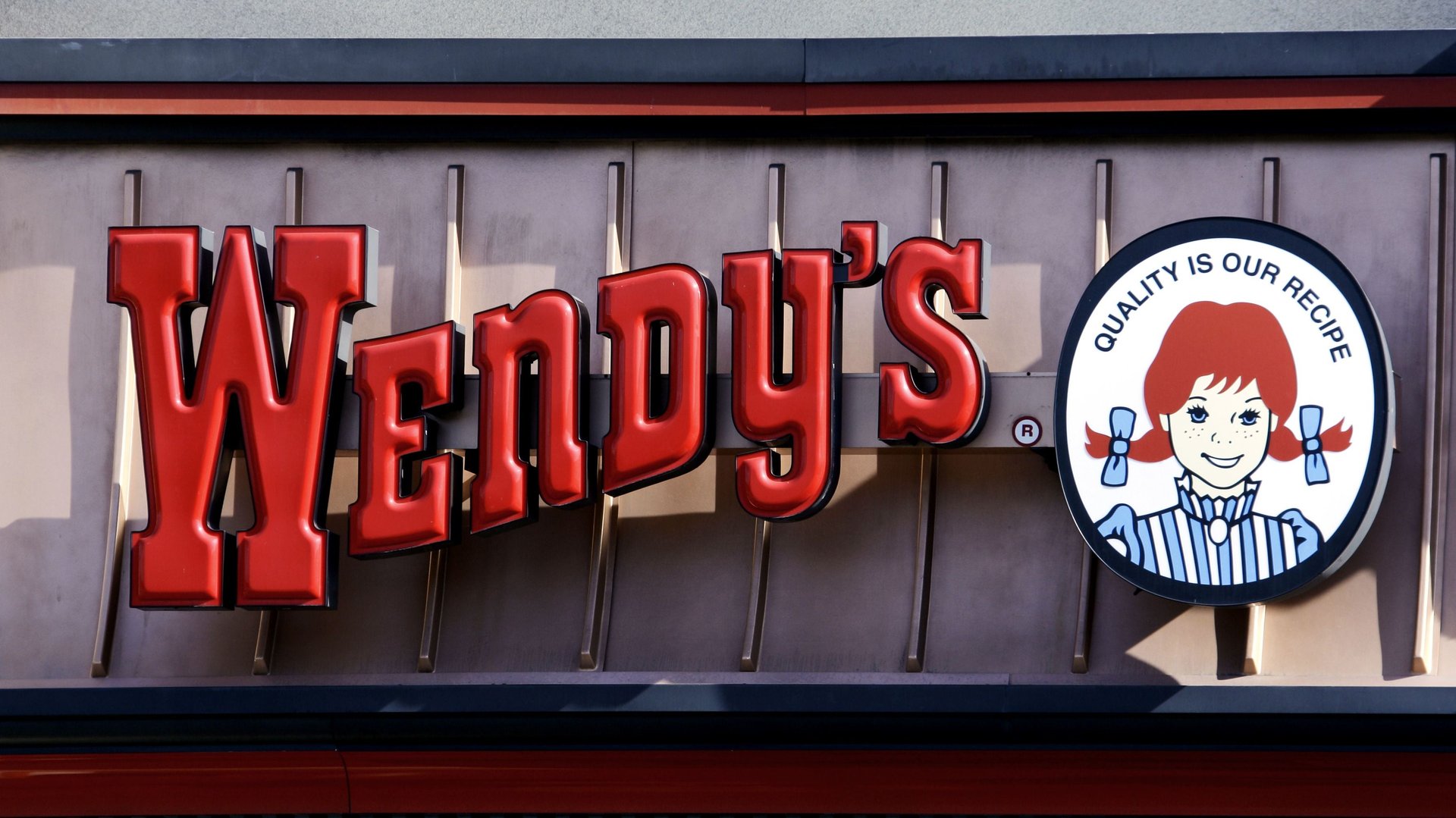Wendy’s is responding to the rising minimum wage by replacing humans with robots
By the end of the year, Wendy’s says it will have installed self-serve ordering kiosks in 1,000 of its restaurants.


By the end of the year, Wendy’s says it will have installed self-serve ordering kiosks in 1,000 of its restaurants.
COO Robert Wright told investors that the machines, along with other forays into automation, will help reduce labor costs, which rose 5% at the company last year as a number of states—including Alaska, California, and Massachusetts—raised their minimum wages. Replacing human labor with machines, or threatening to do so, has become a common response to raising wages by fast food executives.
Andy Puzder, the head of Hardee’s and Carls Jr.’s parent company and briefly US president Donald Trump’s nominee for secretary of labor, said in a 2016 interview that higher minimum wages made restaurant automation more attractive, adding that robots are “always polite, they always upsell, they never take a vacation, they never show up late, there’s never a slip-and-fall, or an age, sex, or race discrimination case.” And after McDonalds announced a plan to roll out self-serve kiosks in its US stores, Bennigan’s CEO Paul Mangiamele said on Fox Business that “We have to address somehow the rising costs of operating in our businesses.”
Food service relies heavily on predictable, repetitive tasks that are already possible to automate. A recent McKinsey analysis of 800 occupations found “accommodation and food service” to contain the highest percentage of tasks—73%—that could be completed using current technology. But it takes more than technology to make replacing humans feasible.
The first automated burger machine, for instance, debuted more than 50 years ago, but practical considerations, like the cost of the machine compared to labor and the machine’s limitations, stalled adoption. Today, as the price of labor rises, the cost of machines drop (three of Wendy’s kiosks, according to the LA Times, will cost just $15,000), and the quality of the technology improves, automation technology is becoming a legitimate option to fast food restaurants.
That might sound like terrible news for the nearly 5 million Americans who work in food and beverage serving industries, but some restaurants say that the automation of some tasks won’t come with job cuts, at least not immediately. McDonalds has said it doesn’t plan to reduce its workforce as it installs ordering kiosks. Panera Bread has said that at some locations where it has ordering kiosks, it has actually increased human hours to help the kitchen keep up with the higher number of orders that come in through the more efficient ordering system. Indeed, when technology automates some portion of a job, employment in that occupation often increases.
“We could never take out all the front-line employees” at Hardee’s and Carl’s Jr. restaurants, Puzder told the Washington Post. “You have to have people behind the counter because [customers] are used to that and people are more comfortable with it.”
But with time, customers may get just as comfortable with machines (Wendy’s executives have said that some customers already prefer the kiosks), and while reduced fast food workforces aren’t a preordained outcome of automation, they are a possibility.
Correction: An earlier version of this story attributed Bob Wright’s comments to a conversation with the LA Times. He made them during Wendy’s Investor Day.